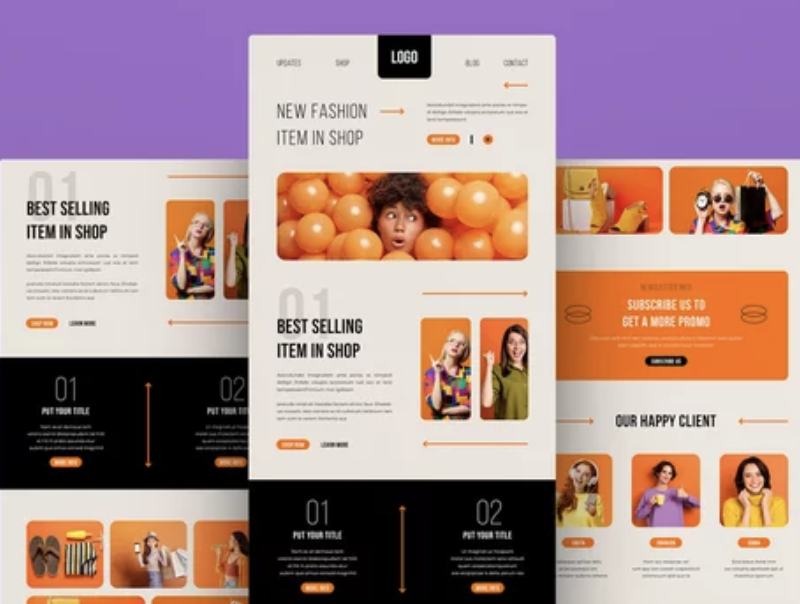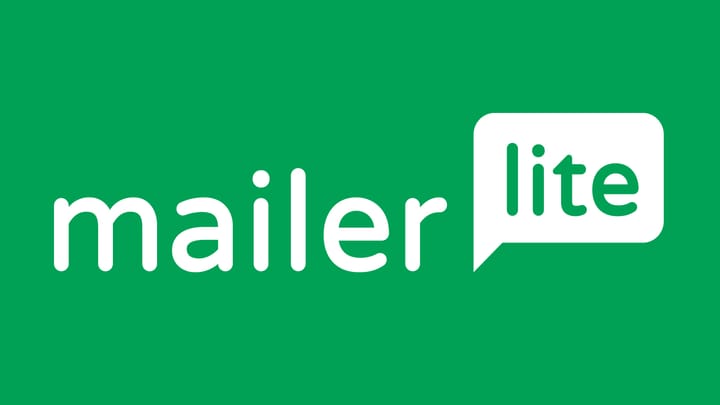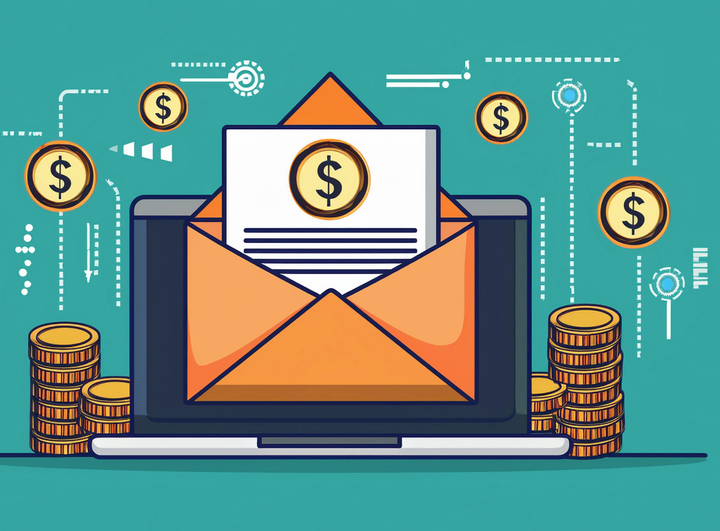How To Choose The Right Email Marketing Platform: 5 Easy Checklist
When you're looking for an email marketing app for your business, the good news is there are plenty of options to choose from. Whether you want to automate your campaigns or target a specific audience, there's an app for every need.

When you're looking for an email marketing app for your business, the good news is there are plenty of options to choose from. Whether you want to automate your campaigns or target a specific audience, there's an app for every need.
But with so many choices, it can feel a bit overwhelming. It's easy to get lost in the endless features, analytics, and tech details when all you really want to do is send out a newsletter.
As a small business owner juggling many roles, email marketing is a powerful way to connect with your audience, promote your products, and boost sales.
Finding the right platform is key, as it can make or break your campaigns—and the right tool will help you manage your subscribers, design responsive emails, automate your efforts, and track your success.
This guide is here to help you sift through your options and pick an email marketing app that not only fits your needs but also makes your life a little easier.
But first, know your email marketing goals
How to Pick the Best Email Marketing Platform?
Make sure your goals are clear and meet your needs.
First, you should ask yourself some important questions:
- How big is your audience, and how many people do you plan to email? This will help you figure out how much the platform can hold.
- What tools do you have? How much time and money do you have to learn how to use the platform? Custom templates are important to you.
- Do you know how to create them, or do you need an editor that is already built in and easy to use? Then, think about how often you want to send emails, like updates, articles, or ads.
You may also need extra features or rights if you're handling emails for clients or customers. Don't forget to make sure that the site works well with the other tools you already have.
You'll have a better idea of what features are most important after answering these questions. Remember that your wants may change as time goes on. You can easily switch platforms because most of them let you export your user list.
All of the ones we talk about also make it easy to import that list, so any change goes smoothly.

Which type of email should you send?
Choosing the right email marketing app really comes down to the types of emails your business plans to send.
Understanding the different kinds of emails—like transactional ones—helps steer your decision. Transactional emails are essential for keeping your customers informed; they’re triggered automatically when a customer interacts with your business.
These could include purchase confirmations, shipping updates, or even password reset links. For instance, when someone signs up for the app “Zara,” they get an email right away confirming their account, often with a nice bonus like discounted offers.
Knowing what kinds of emails you need to send makes it easier to pick a platform that fits your business perfectly.
Checklist #1: Identify the essential features your email marketing platform needs to have
When choosing your email marketing platform, it’s important to nail down exactly what you need, especially if transactional emails are part of your plan.
These are the emails customers expect when they make a purchase, like order confirmations and delivery updates. Think about whether you also want to send SMS messages directly to your customers’ phones.
If transactional emails are a must, make sure the platform integrates well with your website—most platforms offer APIs and SMTP functions that work with most commonly used eCommerce platforms like Squarespace, Shopify, or Wix. Look for one that supports both transactional and marketing emails to keep things simple and cost-effective.
Platforms like Maileroo can handle both, which could save you some time and money. If SMS messaging is something you're considering, check if the platform supports that as well. Think about how it will work with your existing customer data—integrating with CRM systems or tapping into your customer database can make your email campaigns more personalised and engaging.
Lastly, you should also take note of an email platform that will automatically provide you data on how your email campaigns perform.
Checklist #2: How much would it cost me for every email you should send? Or how many emails should be sent out?
Before choosing an email marketing platform, start by figuring out how many emails you’ll need to send, as this will impact the pricing.
Transactional Emails:
Think about how many emails you’ll send for each customer order, like confirmations and shipping updates. Estimate your daily and monthly sales now and in the future to get a sense of how many emails you’ll be sending.
Bulk Marketing Emails
Check your database to see how many people you’ll send marketing emails to—this could be your entire list or specific groups based on location or preferences. Also, think about your subscriber growth and how that will affect the number of emails you’ll need to send over time. Be mindful not to over-email—many subscribers prefer one or two emails a week.
Pricing Assessment:
With an idea of your email volume, compare pricing across platforms:
- Free Plans: Great for small startups with limited needs.
- Pay-As-You-Go: Ideal if you’re a smaller business and only want to pay for what you send.
- Monthly Fees: Fixed cost plans are good for larger, consistent email volumes.
- Flexible Pricing: Some platforms let you pay for extra emails beyond your monthly limit without a full upgrade.
Also, look at what extra services are included and whether any features you might need come with added costs.
Checklist #3: Choose better features for better benefits
When you're looking at email marketing platforms, it's important to focus on the features that actually fit your business and avoid paying for stuff you don't need.
Segmentation and Personalisation
Personalisation is more than just using someone’s first name. You want to be able to segment your audience based on things like location, interests, browsing history, or abandoned carts.
Look for a platform that lets you group customers by their past purchases or engagements, so you can re-engage them at the right time. This targeted approach helps boost open rates and keeps your emails out of the spam folder.
A/B Testing
If you’ve got a large email list, A/B testing is a must. You can try out different subject lines, templates, or content to see what gets the best response.Some platforms will even automatically send out the winning version, saving you time and improving your results.
Automation
Automation can really streamline your email marketing. Whether it’s resending unopened emails with a new subject line, sending a welcome series to new subscribers, or offering discounts on birthdays, these automations keep things running smoothly.
Look for platforms that make it easy to set up these automations, ideally with pre-built templates to help you get started faster.
Checklist #4: How Easy is the Email Marketing Platform to Use Day-To-Day?
When you're running your own email campaigns, it's important to find a platform that’s easy to use and fits your business needs without overcomplicating things.
Templates and Customisation
If you’re handling email marketing in-house, user-friendly tools are key. Look for platforms with a variety of ready-to-use templates to save you time and money on design.
A "drag and drop" editor makes customising layouts easy, even if you’re not a designer. It’s also helpful if the platform has stock images or integrates with design tools like Adobe or Canva to enhance your workflow. A free trial or demo can give you a sense of how well the platform suits your needs.
Creating Landing Pages and Social Media Ads
Emails work better when they lead to landing pages that match the content. Custom landing pages can increase your conversions, whether it’s for sign-ups or sales.
Many platforms offer built-in landing page tools, and some even include extra features like eCommerce options. You’ll also want to see if you can connect your social media accounts for easy cross-channel marketing.
Analytics and Reporting
To know how well your campaigns are performing, you need clear access to key metrics like open rates, click-through rates, and conversions. A good platform will make it easy to find and understand this data.
Trying out a demo will help you see if the platform gives you the insights you need without any hassle.
GDPR Compliance
If you’re collecting subscriber info, make sure your platform helps you stay GDPR compliant. Check that it supports custom opt-in forms, offers different levels of consent, and has tools for data deletion requests or anonymizing data.
Support
Lastly, if you’re managing everything yourself, good customer support is a must. Look for platforms that offer guides, a knowledge base, and quick access to help via phone, email, or chat. If you’re sending a lot of emails, having a dedicated account manager can be a huge plus.
Joining a community of users can also help you find solutions to common problems.

The Choices
When you start looking for the right email marketing software, you’ll notice there are tonnes of options. Each one can help you achieve your goals, but they all come with their own unique features. Some tools are built with specific functions in mind, so it’s important to figure out what you really need and what you can live without.
Here are some of the most popular email marketing platforms to check out:
- Zoho Campaigns
- Campaign Monitor
- SendinBlue
- ActiveCampaign
- MailChimp
- Maileroo
Wrap Up
Choosing the right email marketing software is a big deal and can make a huge difference in the success of your campaigns.
It's important to pick a platform that fits your specific needs, so take the time to compare features and see how they align with what you’re looking for in a marketing email platform.
Your email marketing tool will shape how you engage with customers, drive sales, and enhance the overall customer experience, so it’s worth thinking beyond just the price tag. Good email marketing can deliver a great return on investment, making it a key factor in your business’s growth and success.



